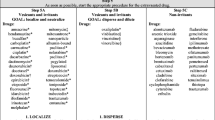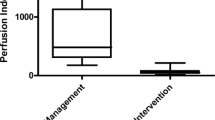Abstract
Dexrazoxane has been in clinical use for more than 25 years for prevention of cardiotoxicity in anthracycline based anticancer therapy. However, we discovered another property of the compound, i.e. the ability to prevent the devastating tissue necrosis after accidental extravasation of anthracyclines. The preclinical and clinical studies leading to the clinical implementation of Savene™ (dexrazoxane) as the first and only proven antidote in anthracycline extravasation are described in short.
Similar content being viewed by others
References
Sehested, M., Jensen, P. B., Sorensen, B. S., Holm, B., Friche, E., & Dermant, E. J. F. (1993). Antagonistic effect of the cardioprotector (+)-1,2-Bis(3,5-Dioxopiperazinyl-1-yl)propane (ICRF-187) on DNA breaks and cytotoxicity induced by the topoisomerase II directed drugs daunorubicin and etoposide (VP-16). Biochemical Pharmacology, 46, 389–393.
Langer, S. W., Sehested, M., & Jensen, P. B. (2000). Treatment of anthracycline extravasation with dexrazoxane. Clinical Cancer Research, 6, 3680–3686.
Langer, S. W., Sehested, M., & Jensen, P. B. (2001). Dexrazoxane is a potent and specific inhibitor of anthracycline induced subcutaneous lesions in mice. Annual Oncology, 12, 405–410.
Langer, S.W., Thougaard, A. V., & Sehested. M et al. (2006). Treatment of anthracycline extravasation in mice with dexrazoxane with or without DMSO and hydrocortisone. Cancer Chemotherapy and Pharmacology, 57, 125–128.
Langer, S. W., Sehested, M., & Jensen, P. B. et al. (2000). Dexrazoxane in anthracycline extravasation. Journal of Clinical Oncology, 18, 3064.
Bos, A. M., van der Graaf, W. T., & Willemse, P. H. (2001). A new conservative approach to extravasation of anthracyclines with dimethylsulfoxide and dexrazoxane. Acta Oncology, 40, 541–542.
Jensen, J. N., Lock-Andersen, J., & Langer, S. W. et al. (2003). Dexrazoxane–a promising antidote in the treatment of accidental extravasation of anthracyclines. Scandinavian Journal of Plastic and Reconstructive Surgery and Hand Surgery, 37, 174–175.
El Saghir, N., Otrock, Z., & Mufarrij, A. et al. (2004). Dexrazoxane for anthracycline extravasation and GM-CSF for skin ulceration and wound healing. Lancet Oncology, 5, 320–321.
Mouridsen, H. T., Langer, S.W., & Buter, J. et al. (2006). Treatment of anthracycline extravasation with Savene (dexrazoxane): results from two prospective clinical multicentre studies. Annual Oncology, Dec 21.
Mouridsen, H. T. et al. Treatment of anthracycline extravasation with Savene (dexrazoxane). Results from two prospective clinical multicenter studies. Annals of Oncology. (In press).
Author information
Authors and Affiliations
Corresponding author
Rights and permissions
About this article
Cite this article
Langer, S.W., Jensen, P.B. & Sehested, M. Other uses of dexrazoxane: savene, the first proven antidote against anthracycline extravasation injuries. Cardiovasc Toxicol 7, 151–153 (2007). https://doi.org/10.1007/s12012-007-0021-5
Published:
Issue Date:
DOI: https://doi.org/10.1007/s12012-007-0021-5




